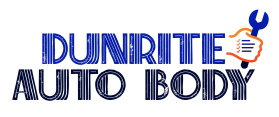
Driving a limousine is a daily tradition for millions, yet many disregard the intricate network of security features created to protect occupants in surprising circumstances. Beyond the obvious security features like airbags and seatbelts, your instrument boasts a surprising array of “inadvertent” protection mechanisms.
These are frequently overlooked but play a fault-finding role in lightning damage and injury during accidents or surprising events. This item delves into these hidden safeguards, telling the engineering marvels that help your safety.
Beyond the Obvious: Passive Protection Systems
While airbags and seatbelts are the most acknowledged passive security features, your convertible possesses a wider range of cunning yet important protection arrangements. These often introduce tandem to mitigate the impact forces all along a collision.
· Crushing Zones and Energy Absorption:
The front and rear portions of a bus are designed to accompany strategically placed crumple zones. These districts are specifically devised to deform and consume a significant amount of impact strength during a collision.
This regulated deformation reduces extrasensory perception transmitted to the passengers’ section, lessening the severity of injuries. Imagine a pickup like a controlled, register accordion. The squeezebox folds to absorb the impact, protecting the essential parts within.
· Reinforced Passenger Compartments:
The traveler compartment itself is erected with supported materials and structures. This contains the doors, roof, and side frames. These districts are designed to uphold their integrity during an accident, creating a guarding shell about the occupants.
This is crucial in countering intrusion into the cabin from extrinsic forces. Think of it as a fortified box, planned to withstand meaningful impact.
· Safety Glass and Windshield Design:
Modern windshields and side windows are often flaky, meaning they amount to multiple coatings of glass guaranteed together. This design makes the glass more opposing to shattering, lowering the risk of flying cup fragments injuring occupants.
The windshield’s design also incorporates features to prevent it from entirely shattering in an accident, creating a protective obstacle.
Active Protection Mechanisms: Subtle but Crucial
Beyond passive forms, certain alive features carefully contribute to protection in surprising situations. auto repair shop in Littleton, Co will help you in any kind of issue.
· Steering Column Collapse:
In a few vehicles, the guiding column is designed to collapse upon impact.
· Suspension System Design:
The vehicle suspension system, while generally fixated on ride comfort, plays a function in underrating the impact forces on the occupants during an accident.
· Anti-lock Braking System (ABS):
While this is generally known for claiming vehicle control during braking, ABS again plays a role in lowering the risk of injury.
Conclusion
By appreciating the construction behind these passive and alive features, drivers can gain a deeper understanding of the guarding mechanisms guaranteeing their safety along the way. These features, while not forever the focus of attention, are critical to the overall security of a vehicle and allure occupants.






